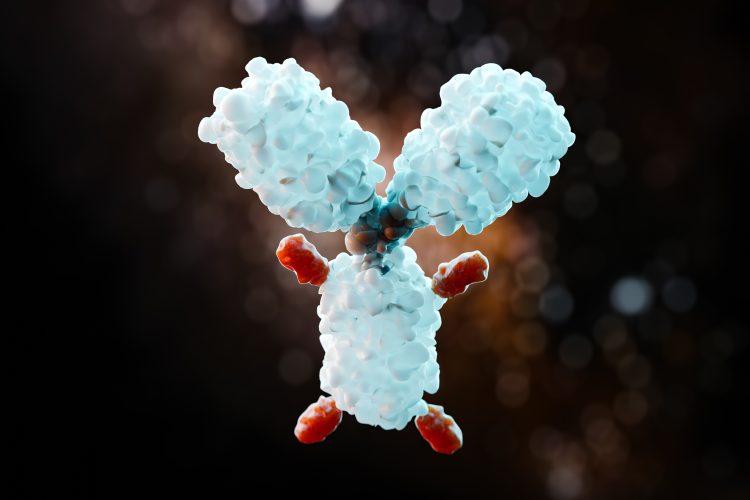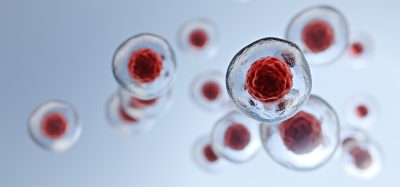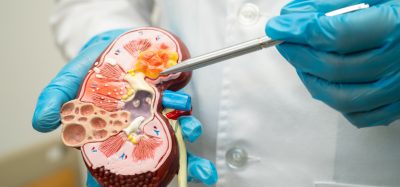Shifting the ADC focus from antibody to payload
Posted: 6 June 2025 | Drug Target Review | No comments yet
While ADCs continue to attract attention in oncology, many developers remain focused on antibodies – overlooking the critical role of payload design. At Sygnature Discovery, Dr Joshua Greally is leading a shift in perspective, advocating for a payload-first approach through the company’s new platform, NewPath ADC. In this interview, he explains why payloads deserve equal footing and how better design could unlock the full potential of ADCs.


As antibody-drug conjugates (ADCs) gain traction across oncology and begin to expand into other therapeutic areas, a persistent challenge remains: the design and optimisation of payloads. Across Sygnature Discovery, multidisciplinary teams in Canada and the UK are actively working to address these challenges. With an extensive background in small molecule chemistry, bioconjugation and protein science, these expert teams are leading efforts to place payload development at the centre of ADC innovation. Dr Joshua Greally, ADC Lead and Scientific Business Development, joined us to explain background and benefits of the New Path ADC approach.
From molecules to modalities
Greally began his career in small molecule chemistry before completing a PhD in bioconjugation, with a focus on payload design and conjugation methods. Now at Sygnature Discovery, he works across both commercial and technical functions, with a primary focus on expanding the company’s ADC capabilities – particularly through the creation of its new payload-driven platform, NewPath ADC.
Reimagining the ADC paradigm
ADCs have traditionally been developed with an antibody-first mindset, often treating the payload as a fixed component rather than a central driver of efficacy and safety. Greally believes this approach oversimplifies the complexity of ADCs as hybrid modalities.
Biomarkers are redefining how precision therapies are discovered, validated and delivered.
This exclusive expert-led report reveals how leading teams are using biomarker science to drive faster insights, cleaner data and more targeted treatments – from discovery to diagnostics.
Inside the report:
- How leading organisations are reshaping strategy with biomarker-led approaches
- Better tools for real-time decision-making – turning complex data into faster insights
- Global standardisation and assay sensitivity – what it takes to scale across networks
Discover how biomarker science is addressing the biggest hurdles in drug discovery, translational research and precision medicine – access your free copy today
The ADC itself is not necessarily a large molecule – it’s a small molecule with aspects of a large molecule, and vice versa.
“The ADC itself is not necessarily a large molecule – it’s a small molecule with aspects of a large molecule, and vice versa” he explains. “It’s almost both worlds coming together”.
“Most are concentrating on the delivery van and not necessarily on the package,” he adds, highlighting the industry’s tendency to focus on antibody engineering while underinvesting in payload innovation. “And we think the package is probably equally, if not more, important.”
In Sygnature’s approach, the payload is treated not as a plug-in cytotoxin, but as a critical element that demands the same depth of design, selectivity and functional understanding as the antibody.
Payloads and selectivity
One of the ways Sygnature is addressing this imbalance is taking a ‘pseudo-bispecific’ approach to payload design. Traditionally, the antibody has provided the primary means of tumour selectivity. However, if the payload lacks specificity, systemic toxicity can remain a serious limitation, which is reinforced by the currently approved ADC landscape.
“We want to maintain the selectivity from the antibody, but we also want to get the selectivity from the payload as well,” emphasises Greally.
This approach focuses on tailoring payloads to exploit tumour-specific biological features – such as dysregulated signalling or upregulated intracellular processes – adding a second layer of selectivity beyond antigen targeting. This dual-targeting concept aims to expand the therapeutic window and reduce systemic toxicity.
Medicinal chemistry meets biologics
While ADCs are often discussed within the framework of biologics, Greally notes that they sit at the intersection of small and large molecule development, highlighting that this intersection is often underserved.
“The main issue within the ADC space is this payload-mediated systemic toxicity,” he explains. “And in the small molecule space, it’s about overcoming pharmacokinetic factors and formulation issues.” Therefore, utilising a payload focussed medicinal chemistry approach to ADCs, including the repurposing of small molecules, can have a positive impact on both issues.
To bridge this gap, Sygnature has adopted the design–make–test–analyse (DMTA) cycle – a process commonly used in small molecule optimisation – for ADC development. Greally explains that this iterative approach allows for more rigorous evaluation of ADC candidates, particularly in relation to pharmacokinetics and in vivo performance.
We found that the medicinal chemistry approach to small molecule development is actually really applicable to the ADC world as well.
“We found that the medicinal chemistry approach to small molecule development is actually really applicable to the ADC world as well,” he notes. “Large molecule work doesn’t necessarily have this long lead optimisation, but we’ve found that with ADCs, we need it.”
By introducing a more rigorous optimisation phase into ADC development, Sygnature aims to build a deeper understanding of payload metabolism and in vivo performance, supporting safer and more effective ADC candidates.
Bridging the research gap
When asked about the most pressing gap in ADC development, Greally is clear: it’s payload design, delivery and exploiting different mechanisms of action. Despite the growing interest in ADCs, many developers continue to rely on established payload–linker combinations that were designed for earlier generations of molecules.
“We’re quite guilty within the ADC world of piggybacking off things that are already within the clinic, as a way to mitigate risk” reflects Greally. “The issue with that is that if one has adverse effects, then all the other molecules come into question.”
He points to the withdrawal of Belantamab mafodotin (Blenrep) as a reminder of how clinical setbacks – whether due to efficacy or toxicity – can cast doubt over entire classes of ADCs, particularly those using the same payloads.
The birth of NewPath ADC
In response, Sygnature launched NewPath ADC – a dedicated platform focused on optimising ADCs through a payload-first lens.
“We view each of the components of an ADC as a whole entity,”, Greally explains.
The platform assembles capabilities in target identification, payload design and optimization, linker chemistry, conjugation and preclinical in vitro/in vivo analysis. It aims to move beyond the common practice of relying on off-the-shelf linkers and clinic-tested payloads, instead supporting the exploration of alternative mechanisms of action and the repurposing of small molecules not traditionally used in ADCs.
Looking beyond oncology
While oncology remains the dominant area for ADC development, Greally is observing increasing interest in other therapeutic areas.
“We’ve seen a lot of development within the oncology space,” he says,
“but things like inflammation, immunology, metabolism, even neurodegeneration are all seeing an uptake within the ADC space now.”
This expansion brings new technical challenges – from target selection to payload mechanism and delivery – but it also reinforces the idea that ADCs can act as delivery systems for more than just cytotoxics.
What’s next?
Greally points to three innovation areas that are likely to shape the future of ADCs: new payload mechanisms of action, dual payloads approaches and degrader–antibody conjugates.
Dual-payload ADCs could combine orthogonal mechanisms of action in a single therapeutic, which Greally suggests may help minimise resistance and improve treatment outcomes. He also sees growing potential in degrader–antibody conjugates, which can help overcome some of the limitations associated with the delivery and drug-like properties of small molecule degraders.
“Being able to bring those two worlds together – the antibody selectivity and the potency of a degrader – is a really niche area that currently shows promise,” he says.
A new era for ADCs
Looking ahead, Greally says Sygnature is continuing to build out its NewPath ADC platform, aiming to support integrated, payload-focused ADC development – from early discovery through to clinical readiness.
With in-house capabilities covering antibody and antigen production, linker synthesis, conjugation and full in vitro and in vivo testing, the company is aiming to support more cohesive ADC programmes.
“We want to give better safety profiles for patients, better therapeutic outcomes, better therapeutic windows – and just a better standard of care,” Greally concludes.


ADC Lead and Scientific Business Development, Sygnature Discovery
Dr Joshua Greally has over 10 years’ experience in drug discovery across industry and academia, specialising in Antibody-Drug Conjugates (ADCs). With a background in medicinal chemistry (BSc and MSc), he began his career in biotech developing small molecule therapies before completing a PhD at the University of Manchester, where he developed novel payloads and conjugates for myeloid cancers.
He has since led conjugation operations in the ADC space and now heads ADC strategy and development at Sygnature Discovery. There, he supports clients in advancing ADC assets, advises on ADC suitability for therapeutic programmes, and drives innovation through platform development and capability expansion.
Related topics
Antibodies, Antibody Discovery, Biologics, Biopharmaceuticals, Cytotoxicity assays, Drug Delivery, Drug Development, Drug Discovery, Drug Discovery Processes, Medicinal Chemistry, Oncology
Related conditions
Cancer
Related organisations
Sygnature Discovery








